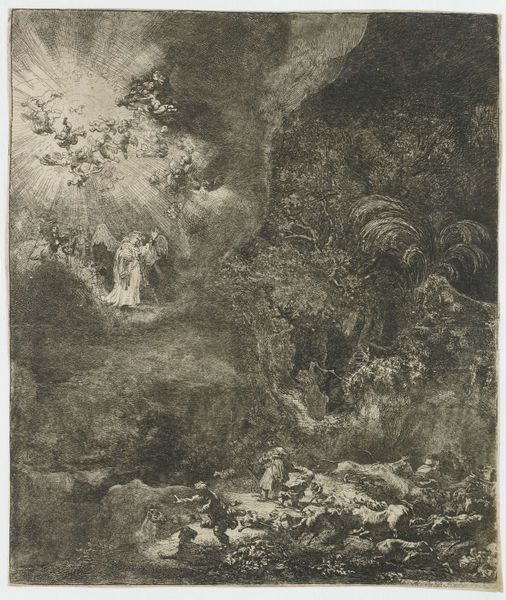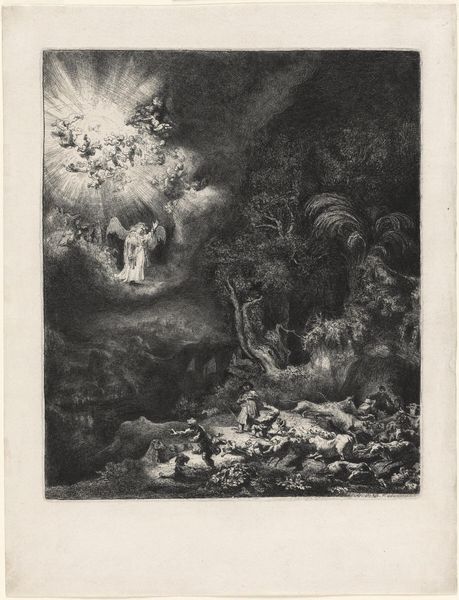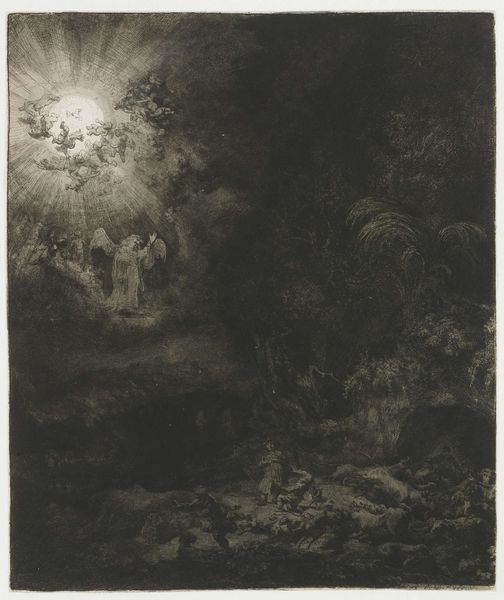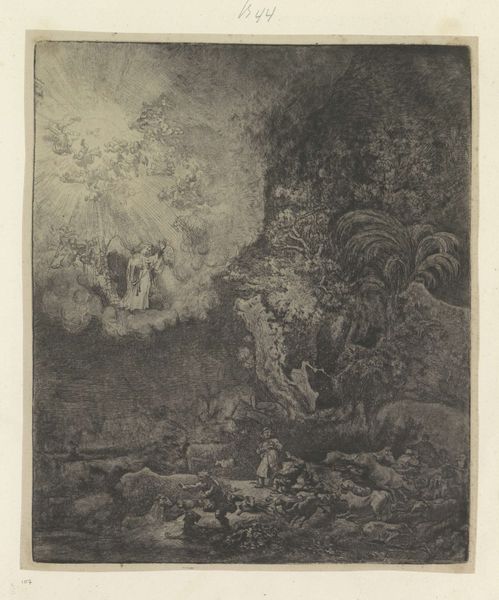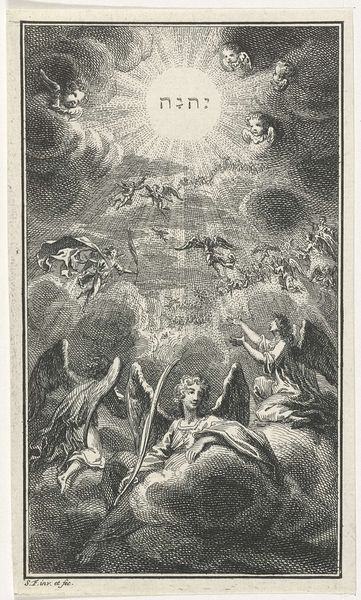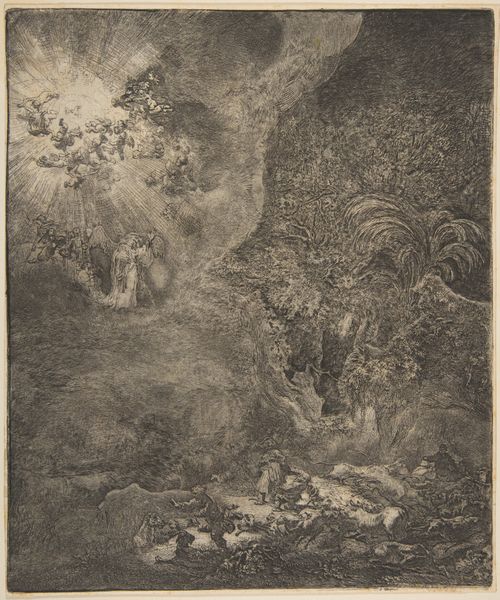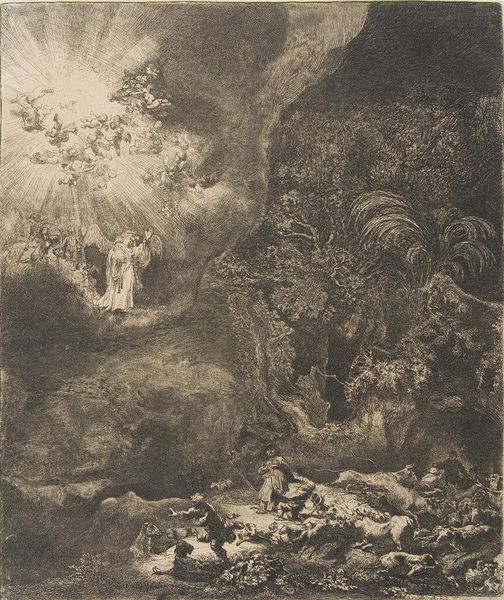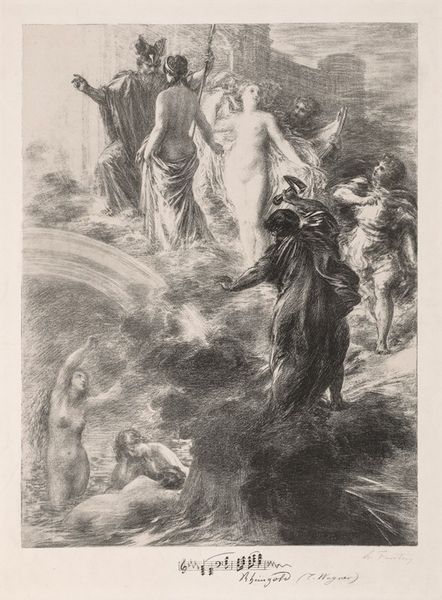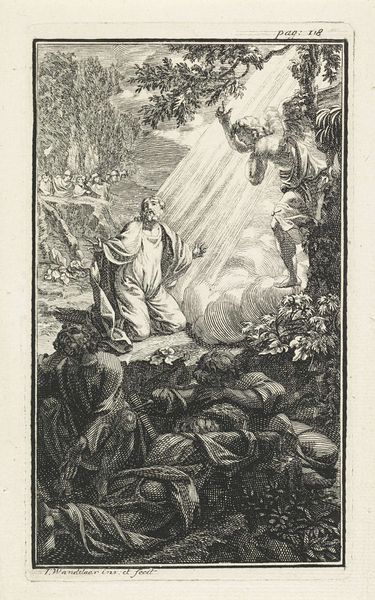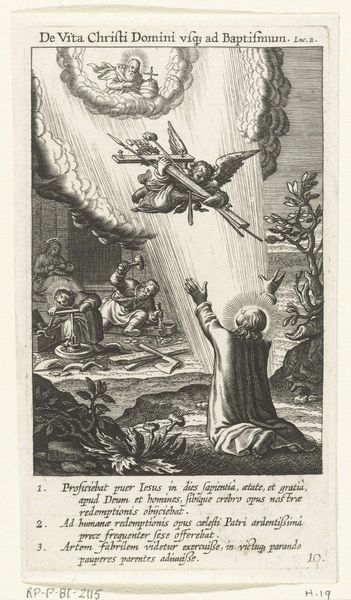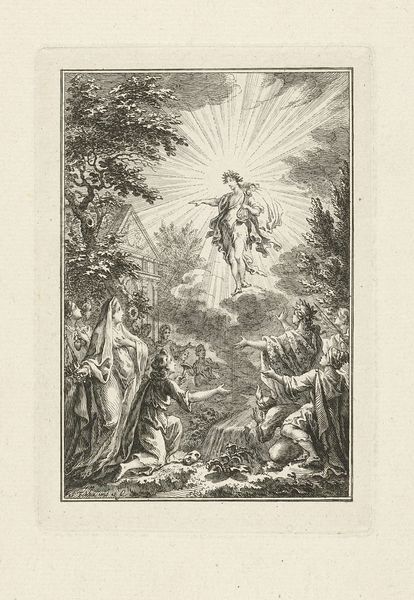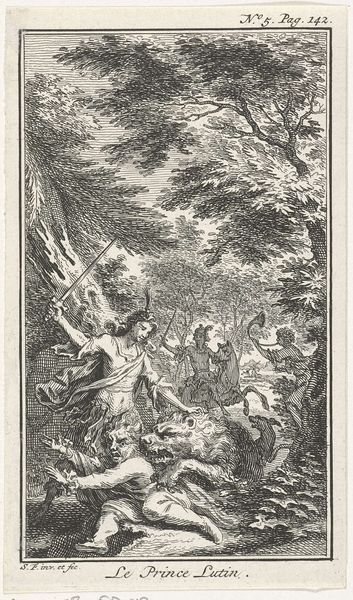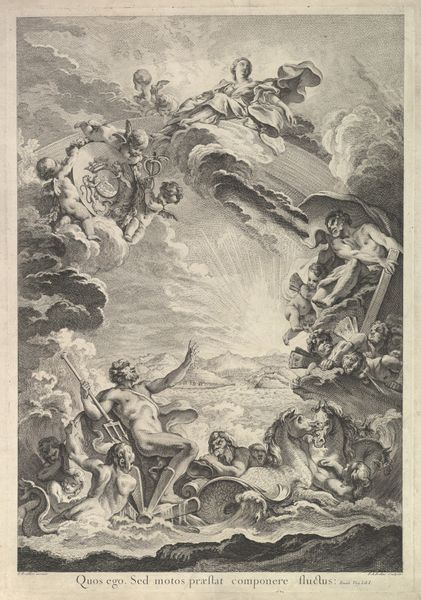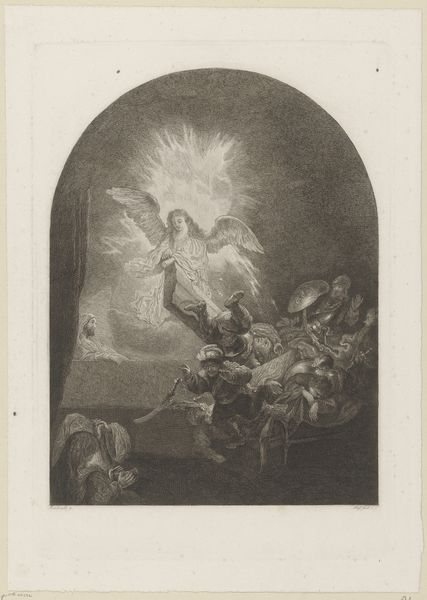
drawing, print, etching
#
drawing
#
narrative-art
#
baroque
#
dutch-golden-age
# print
#
etching
#
landscape
#
figuration
#
history-painting
Copyright: Public Domain: Artvee
Curator: Before us is Rembrandt van Rijn’s etching, "The Angel Appearing to the Shepherds," created in 1634. Editor: What strikes me immediately is the dramatic contrast. The angel and heavenly host explode with light, while the landscape seems to recede into inky darkness. It’s almost theatrical in its presentation. Curator: It's important to note that Rembrandt's social circles intersected with Anabaptist beliefs. Their interpretations centered the Bible and ordinary believers, particularly those who suffered from socioeconomic pressures. His depiction of shepherds here seems consistent with those views. Editor: Absolutely. And from a material perspective, etching allowed for this kind of dramatic play with light and shadow. Think of the acid biting into the metal plate to create deep lines for the ink—a real labor-intensive process. That darkness isn't just aesthetic; it's literally built into the piece. Curator: Right. Rembrandt employed etching as a key means of distributing and therefore democratizing the message behind religious subjects and scenes, and specifically stories that focus on common people, allowing interpretations to transcend geographical constraints or access to specialized religious institutions. It's hard not to recognize the parallel between this democratization of the spiritual and concurrent colonial projects and commercial distribution networks. Editor: And within this system, he’s highlighting the labor and the lived realities of these shepherds. We aren't looking at idealized figures; these are working men, caught off guard. Even the livestock feels… vulnerable, grounded. Curator: And beyond the surface-level depictions of socio-economic and professional disparities, there is a certain visual commentary on human reactions to divinity or power that, depending on one’s interpretation of both religion and history, could symbolize social and political upheavals too. Editor: Yes, there is this interesting tension between the ethereal and the tangible here that invites layered analyses, reminding me how the print itself becomes a commodity, an object imbued with layers of both spiritual and material significance. Curator: Indeed, considering this work forces us to reconsider accessibility as a potentially multi-faceted concept: from religious accessibility, which some critics have pointed out in this specific Rembrandt's work, all the way to accessibility from a socioeconomic perspective. Editor: For me, looking at the dense shadows in this work, understanding the process—the acid, the labor—heightens its impact. It brings a deeper sense of how it reflects our engagement with materials and ideas.
Comments
No comments
Be the first to comment and join the conversation on the ultimate creative platform.
